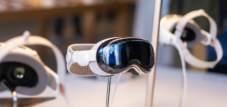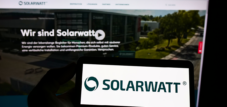Published on: August 4, 2025 / Updated on: August 4, 2025 – Author: Konrad Wolfenstein

Flying motorcycles between vision and reality – The Airkbike from Volonaut and its competitors – Video image Screenshot: Volonaut
Urban Air Mobility: How flying motorcycles can change traffic
Why are flying motorcycles being discussed now?
Flying motorcycles are a more sophisticated version of the urban air mobility concept that engineers and investors have been exploring for years. Lightweight structural materials, compact engine construction, powerful flight computers, and simplified certification classes for ultralight aircraft are creating, for the first time, a technical and regulatory environment in which individuals could purchase, pilot, and insure such a device. At the same time, media attention is driving demand for spectacular prototypes.
What is the story of the developer of the Volonaut Airbike?
Tomasz Patan, an engineer from Poland, became known for his electric-powered eVTOL ultralight Jetson One, which has been in series production since 2025. Patan previously worked in the helicopter and drone sector and promotes the idea of simplifying aircraft so that "everyone can be a pilot."
What makes the Airbike structurally different from classic eVTOL drones?
- Propulsion: A steerable mini-gas turbine generates thrust, while most eVTOLs rely on distributed electric motors.
- Weight: According to the manufacturer, the frame, which is made entirely of 3D-printed carbon fiber, weighs only 30 kg.
- Aerodynamics: No wings, no freely rotating rotors; lift is generated solely by turbine thrust and software-controlled vector nozzles.
- Cockpit: Completely open; flight information should be projected into the helmet.
- Control: A flight computer stabilizes attitude and yaw, comparable to a camera drone.
How fast, how far and how high can the Airbike fly?
The Airbike prototype reaches a top speed of 190 km/h, while the planned production model is limited to 102 km/h to comply with ultralight aircraft regulations. Flight time is up to 10 minutes, depending on the pilot's weight, and remains unchanged in the production model. The maximum pilot weight is 95 kg. The Airbike uses VTOL (vertical takeoff and landing) for takeoff and landing. The prototype reaches ground contact, while the production model also uses VTOL.
The range remains below 20 km and depends heavily on power requirements and thrust reserve.
Does the pilot need to have a pilot’s license?
In the USA, according to the manufacturer, the Airbike falls under FAR Part 103 for ultralights; there, training is sufficient. In Europe, at least the national sport pilot license for ultralight vertical takeoff aircraft would be required. The German LTF-UL permits single-seaters with a maximum takeoff weight of 600 kg and 120 kW of continuous power. The Airbike easily meets the weight requirements, but the noise certification and the requirement for rescue equipment remain open.
Which fuels are suitable and what is their environmental impact?
The turbine accepts jet fuel, kerosene, diesel, or biodiesel. While Sustainable Aviation Fuel can reduce emissions by up to 80%, the engine remains noise- and exhaust-intensive compared to electric eVTOLs. However, the short flight time also means relatively low overall emissions per flight, as long as the device is not operated continuously.
What safety reserves exist in the event of engine or software failure?
- No autorotation or gliding mode: If the turbine fails, the Airbike descends without braking.
- No emergency umbrellas like the one Jetson One has are known so far.
- Flight time buffer: Only a few minutes reserve in case of headwind or missed approach.
- Stress test data are not publicly available; no published patents exist.
Why is the market asking for a price of $880,000 despite the risks?
- Handcrafted carbon structures, 3D printing in small series.
- Airworthy mini-turbines from the model jet sector cost five- to six-figure sums each.
- Certification tests, insurance and manufacturer liability increase the cost of individual items.
What competing models are there and how do they compare?
There are several competing models that differ in concept, propulsion, speed, flight time, price, and stage of development. The Volonaut Airbike is a single-seater with a VTOL turbine and a jet engine, reaches a speed of 102 km/h, flies for up to 10 minutes, and costs $880,000; it is available for pre-order for 2026. The JetPack Aviation Speeder has four to eight jet turbines, reaches speeds of up to 240 km/h, and has a flight time of between 10 and 22 minutes, at a price of $380,000; it is in P2 prototype status. The Aerwins XTurismo uses two propellers and four stabilizers, is powered by a hybrid Kawasaki ICE and electric propulsion, reaches 100 km/h, flies for up to 40 minutes, costs $777,000, and is being produced in small series in Japan. The Aero-X from Aerofex has a double-ducted rotor, is powered by a piston-type internal combustion engine, flies at 72 km/h and for up to 75 minutes, and is priced at $85,000. The model has been announced but has not yet been launched. The Jetson One has eight electric-motor-driven propellers, reaches 102 km/h, has a flight time of 20 minutes, costs $98,000, and is scheduled for series delivery starting in 2024.
What technical hurdles have caused previous projects to fail?
- Vibrations and uncontrolled resonances in ducted rotors (Aerofex).
- Noise levels over 120 dB for jet turbines (speeders).
- Battery weight versus range for electric hoverbikes like the Lazareth LMV 496.
- Inadequate flight control software for stable hovering (military hoverbike programs).
- Lack of business models for maintenance, spare parts and pilot training.
How realistic is series production by 2026?
Volonaut doesn't list suppliers or production capacity. Comparable eVTOL startups often require five to seven years from first flight to certification. The Jetson One line produces 300 units per year, but with much simpler technology. For a turbine airbike, the following are currently missing:
- vibroacoustic approval according to ICAO Annex 16
- an approved rescue system
- detailed maintenance manuals
- transparent financing.
What legal obstacles are looming in European airspace?
- Proof of airworthiness: The Federal Aviation Office requires component verification, noise and exhaust data.
- Rescue system requirement: In Germany, single-seat ultralights must have a total rescue system unless an exception is granted.
- Restricted flight zones over cities: Many major cities are planning U-space corridors for drones where jet turbines might be undesirable due to noise.
- Insurance requirement: Liability coverage for turbine-powered paragliders is significantly higher than that for paramotors; rates are still unclear.
How do potential buyers react to the niche product?
Initial reservation lists are aimed at well-heeled enthusiasts in the US and the Middle East. The market is reminiscent of the early years of helicopter home kits, when a few hundred units were enough to make a manufacturer profitable.
However, the combination of high price, short flight time, and noise pollution limits their use to show events, desert resorts, or private property.
Which application scenarios are frequently mentioned – and do they stand up to scrutiny?
Frequently cited scenarios for drone use are reviewed for plausibility. Use in urban commuter traffic is considered very low due to noise, a limited range of ten minutes, and a lack of takeoff areas. For extreme sports and leisure activities, plausibility is medium due to the high spectacle factor, but the available weather windows are narrow. Military supply drones are considered impractical due to the small payload and the unprotected equipment. Use for rapid emergency services is considered very low due to the lack of reliability and the lack of approval for nighttime IFR flights. For off-road luxury tourism, plausibility is medium due to the fact that use is permitted on private property, and sandy deserts reduce noise complaints.
What open questions remain from a regulatory perspective?
- How is the exhaust emission limit according to LTF-UL S 113 interpreted for turbine ULs?
- Can German air traffic control safely integrate the device in airspace E and G at 102 km/h without a transponder?
- Is there a need for Europe-wide harmonisation of new UL helicopter categories that cover VTOL jets?
- What training hours are required by law if an auto-hover mode exists but manual throttle management is necessary in an emergency?
How do specialist portals and aviation magazines assess the chances of success?
They equally emphasize the engineering achievement, but express doubts about patents, financing, and concrete test data. Experts point out that, despite numerous PR videos, no independent observer has yet seen a complete flight, thrust, or noise log.
What do the Airbike projects mean for the broader urban air mobility debate?
Flying motorcycles are test laboratories for:
- lightweight fiber composite structures for VTOL applications
- Turbine hybrid concepts until energy storage becomes lighter
- automated stabilization, which also benefits large air taxis
- At the same time, the devices make it clear that acoustics, crash consequences and airworthiness certification remain unresolved UAM problems.
Will the personal jet bike really arrive in 2026?
Technically feasible, financially elite, and regulatory complex: The Volonaut Airbike illustrates both the leap forward in mini-turbines and lightweight carbon construction, as well as the gap between prototypes and everyday mobility.
Without robust rescue systems, certification schedules, and cost reduction, the Airbike will remain a spectacular but marginal sports and show vehicle. The future of urban air mobility therefore depends less on sensational one-offs than on quiet, efficient eVTOL fleets that balance acceptance, infrastructure, and approval.
Your global marketing and business development partner
☑️ Our business language is English or German
☑️ NEW: Correspondence in your national language!
I would be happy to serve you and my team as a personal advisor.
You can contact me by filling out the contact form or simply call me on +49 89 89 674 804 (Munich) . My email address is: wolfenstein ∂ xpert.digital
I'm looking forward to our joint project.











